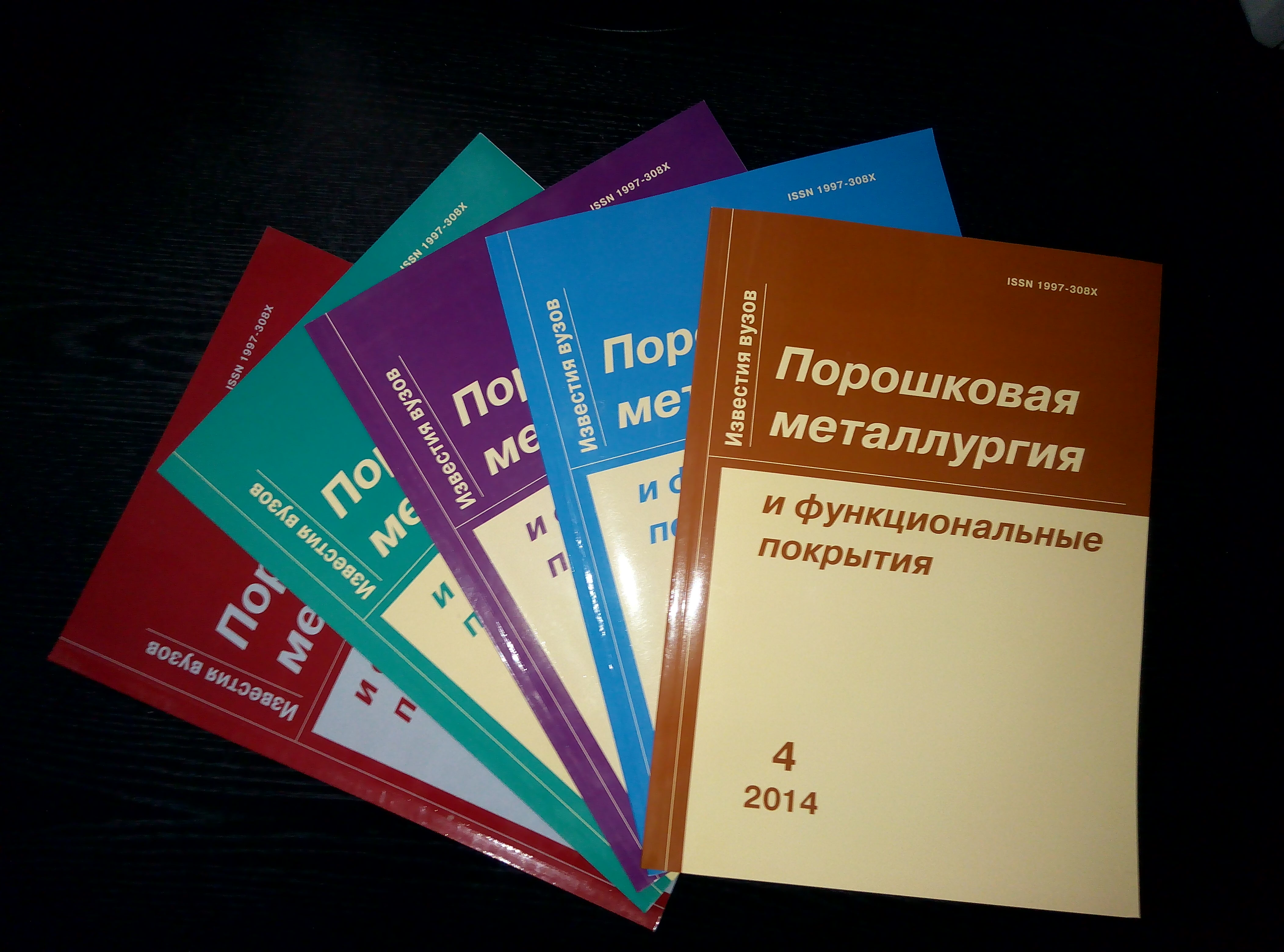The first number of Journal «Powder Metallurgy аnd Functional Coatings» (Izvestiya Vuzov. Poroshkovaya Metallurgiya i Funktsional'nye Pokrytiya) (PMiFP – Proceedings of Higher Schools. Powder Metallurgy and Functional Coatings) was issued in November 2007, and starting from this instant, it is issued quarterly – once every three months. Before this time, List of HAC had no independent periodical devoted to specialization 05.16.06 “Powder Metallurgy and Composite Materials”, in which the results of scientific investigations by this direction of scientists, post-graduate students, doctoral candidates of higher schools, institutions of the Russian Academy of Sciences, and other scientific organization would be published. After the foundation of new Journal PMiFP, the problem of such publications was resolved.
A period of the innovation development of the country that had started in those years is characterized by the growing need in mew materials and technologies, an important place among which is occupied by powder, composite, and nanostructured materials; functional coatings; and nanotechnologies. Powder metallurgy is a field of science and technology on the development of resource-saving and energy-saving processes of fabrication of powders of metals and alloys, oxides and oxide-free compounds, wares made of them; while the surface engineering is a most important direction of the purposeful effect on the surface of materials and wares in order to modify their composition and structure as well as to deposit functional coatings. Both these directions are developed along with humanity, and many procedures are known for several millenniums.
At a modern stage, powder metallurgy lies in the base of creation of nanotechnologies developed by the principle “from up to down”, when initially nanodispersed powder, of which assemblage, formation, and sintering of the necessary construction or tool material are performed, is initially fabricated.
The technical progress requires increasing the operational reliability and imparting new functional properties to various constructions and wares. This can be attained by modifying the surface by beams of charged particles, photon or plasma fluxes, or by the deposition of coatings with the specified functional properties (wear resistance, corrosion resistance, heat resistance, biocompatibility, magnetic and resistive properties, catalytic activity, optical properties, etc.) on a substrate.

First issue of PMiFM
Journal PMiFP publishes the articles by the following sections:
– Production Processes and Properties of Powders;
– Theory and Processes of Formation and Sintering of Powder Materials;
– Self-Propagating High-Temperature Synthesis (SHS);
– Refractory, Ceramic, and Composite Materials;
– Porous Materials and Biomaterials;
– Modification of Surface Including Charged Particle Beams and Photon and Plasma Fluxes;
– Nanostructured Materials and Functional Coatings;
– Application of Powder Materials and Functional Coatings.
Starting from the instant of its foundation, Journal PMiFP was involved as an additional volume to translated Journal “Russian Journal of Nonferrous Metals”, in which scientific articles and reviews are published in English. This made it possible for International scientific community to become familiar with the results and achievements of domestic scientists.
Founders of Journal starting from 2007 and until now:
– State Technical University “Moscow Institute of Steel and Alloys” (starting from 2009, National University of Science and Technology “MISiS”);
Editor-in-Chief: V.N. Antsiferov –Dr. Sci. (Eng.), Prof., Academician of RAS;
Deputy Editor: E.A. Levashov– Dr. Sci. (Eng.), Prof.
The composition of Editorial Board includes of both domestic and foreign scientists from Belarus, Ukraine, Austria, Australia, Germany, and the United States.
Leading Editors: O.V. Sosnina and A.A. Kudinova
For recent years, the quality of articles published in Journal substantially increased due to increased requirements to reviewing, involvement of leading experts to reviewing, and an increase in the backlog due to an increase in the impact factor to 0.304 (according to RISC (RINTs)). A positive role played by foreign members of Editorial Board and experts should be also mentioned.
































